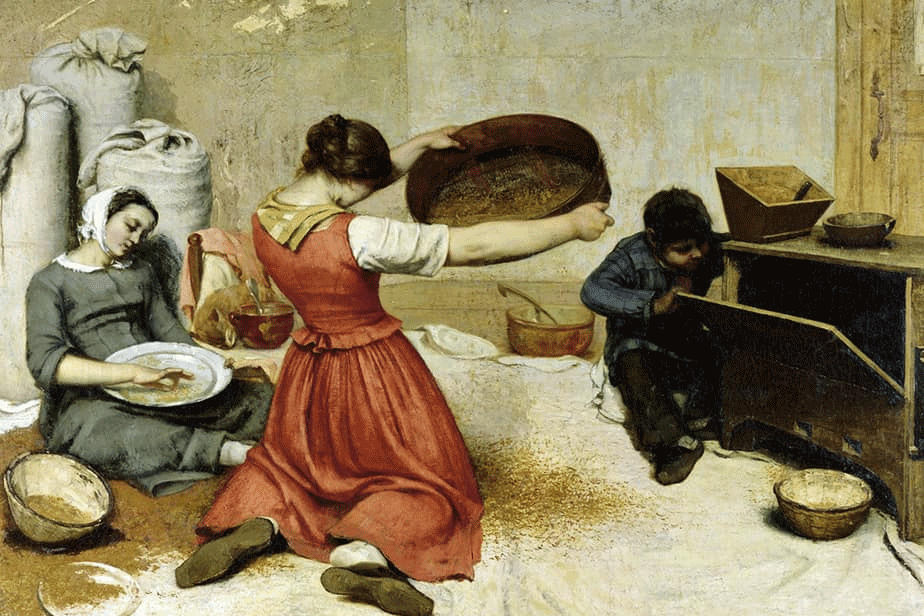Realism art has less to do with the photorealistic painting of images and has more to do with the realistic subject matter. Realism is a significant movement within the realm of art that can be connected to the broader understanding of what art is. When discussing art, you can connect realism by highlighting its key aspects and its role in representing the world as it appears to our senses. Photorealism does play a part, but it is not always present in the paintings of Realism art. This article features the most famous 25 realism paintings.
Nighthawks
Through the large glass window, you can see a small group of people seated at a downtown dinner at somewhat a later time of the night.

Inspired by a Greenwich Avenue restaurant, Edward Hopper crafts an art gem that induces the viewer into awareness. Like a puzzle, the piece is incomplete and Edward coveys the gloomy aftermath of the Second World War in the streets of Manhattan, where he grew up.
Isolation, depravity, and a dark sadness are all you can see when your eyes feed on its details.
The art ultimately reflects the hard life, struggle, and hustle of individuals (both men and women) during one of the darkest days in American history and that is why the famous piece has been
recognized and appreciated throughout the country and beyond.
The Gross Clinic
Much like Edward, Thomas Eakins was indeed famed for individuality in his works and that is why The Gross Clinic is termed as “one of the best American paintworks ever created.” Eakins depicts famous and respected American surgeon Samuel D. Gross displaying one of his surgery sessions to a group of Jefferson Medical College students in Philadelphia.
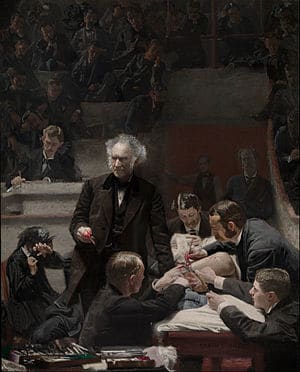
The surgery happens to be an orthopedic one and Thomas himself can be sighted in the top left corner of the portrait. The painting oozes realism and taut detailing the forming of the most highly regarded artworks by Thomas Eakins.
Burial at Ornans
In Ornans France, great-uncle Gustave Courbet is dead and all the townspeople are present to witness the burial of one of the most recognized American works in history.
The realism and shocking narratives of the work are what has made it a classic piece of art not only in America but across the globe.
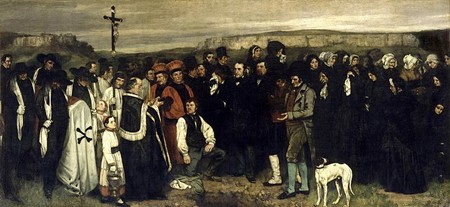
Standing at a majestic 10 by 22 ft (about 3 t0 6m), Gustave Courbet makes a statement about the Realist movement, thereby almost single-handedly causing public mayhem on Romanticism in 1850 eventually bringing about a turning point in both art and religious movements alike.
Do you know how Gustave Courbet buried Romanticism and gave birth to modern art?
Christina’s World
A little more recently into the 20th century, Christina’s World reached the heights of being one of the most favorite realism paintings just before the turn of the millennium.
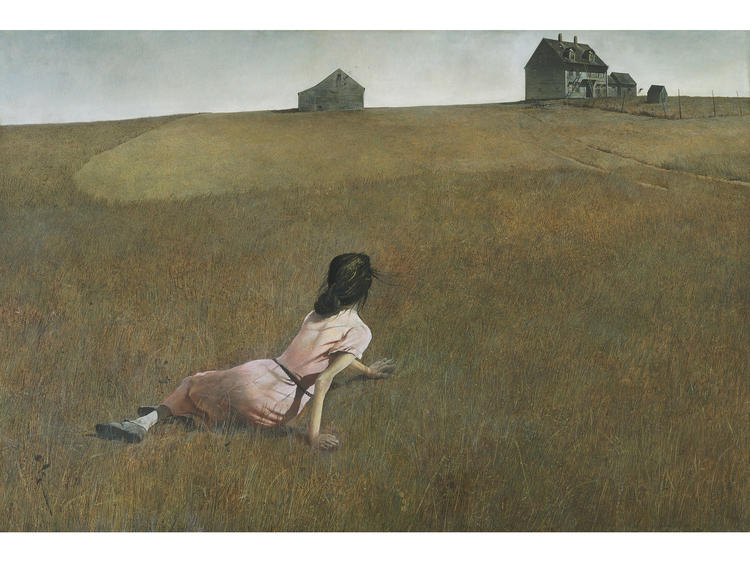 Andrew Wyeth grew up in South Cushing in Maine close to a mysterious lady called Christina Olson who was the woman in his 1948 painting who was crawling helplessly across the field in the address. Miss Christina happened to have suffered degenerative muscular disorder which restricted her movement while she wanted to see the world but instead, it was limited to just a plain horizon.
Andrew Wyeth grew up in South Cushing in Maine close to a mysterious lady called Christina Olson who was the woman in his 1948 painting who was crawling helplessly across the field in the address. Miss Christina happened to have suffered degenerative muscular disorder which restricted her movement while she wanted to see the world but instead, it was limited to just a plain horizon.
Despite getting a rather sluggish reception, it has eventually grown a reputation for being one of the most important realism artworks.
The Elder Sister
William –Adolphe Bougeureau created the astonishing 130.2cm x 97.2 cm painting.
The Elder Sister, one of the famous realism paintings, shows a girl seated comfortably on a rock carrying a little child who was fast asleep. The name of the girl painted was his daughter Henriette and her little brother and the painter’s son, Paul. Behind Henriette, is a beautiful horizon with the greenest landscape to create from the mind.

His work, however, had a permanent collection and was placed amongst the Arts of Europe sections. According to the Museum of Fine Arts in Houston, the painting was first gifted to the institution which has now made it one of the most respected and cherished in European museums.
Interior
In 1968, Realism artist Edgar Degas came to one of his most intricate and puzzling exhibitions.
The painting clearly shows what looks like a marital dispute between two couples where the woman is barely dressed with a mischievous man behind her in the shadows. Almost everything about this art is unclear and that has caused a lot of uncertainties amongst scholars over the years.
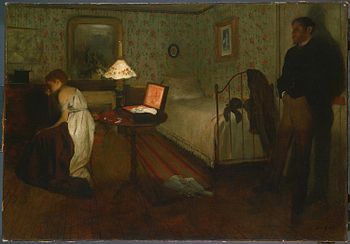
These scholars claimed that the painting was inspired by a stage play, confronting its lack of logic if not deeper meaning buried in there.
Despite this, a renowned writer-journalist then reflects on this otherworldly powerful scene by matching the scene in one of his books Therese Raguin.
Gustave Courbet, Bonjour Monsieur Courbet
It is no surprise that Gustave Courbet appears again in this list as he has already proven to be certainly one of the most influential artists of the 19th century with immaculate French Realism.
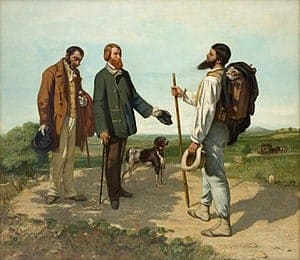
Standing at an astonishing 129 x 149 cm, the French painting – Gustave Courbet, Bonjour Monsieur Courbet – was one of the first art pieces that contrived the words “Avant” (forward) and “guard” (an English troop). It was a greeting amongst war troops who were advocates of risk, flair, and fearlessness and had the rare ability to push ahead of the enemy lines and conquer battles. Gustave made sure the message was passed; depicting himself as a traveling man meeting two noblemen on a gentle afternoon, "avant-garde" he greets.
The Frenchman explores the visual expression of an artist in breaking boundaries with their new ideas and setting the pace for the masses.
The Gleaners by Jean François Millet
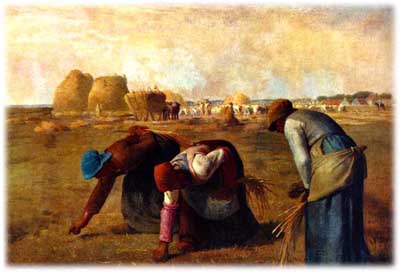
The Gleaners is a painting produced by Jean François Millet in 1857. The Gleaners was a manufacturing company and the name for this painting was inspired by it. In this painting, three women shown are gleaning the grains of wheat. One of the reasons why the Realism art movement has gained a lot of attention is because of the artists who started creating artworks about day-to-day life.
“Beauty does not lie in the face. It lies in the harmony between a person and his or her industry. Beauty is an expression. When I paint a mother I try to render her beautiful by the mere look she gives her child”. – Jean Francois Millet
The Stone Breakers by Gustave Courbet

The Stone Breakers is a painting produced by Gustave Courbet between 1849 and 1850. The French painter exhibited this painting in the Paris Salon in 1850. In this painting, two peasants are shown breaking rocks as they are constructing a road.
Olympia by Édouard Manet
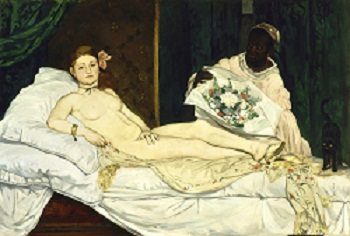
Olympia is a famous realism painting produced by Edouard Manet in 1863. The French painter exhibited the painting at the Paris Salon in 1865. A nude young woman is depicted named Olympia with a black servant who brings her some flowers. Victorine Meurent was the girl who modeled for this painting as Olympia.
Woman with a Parrot by Gustave Courbet
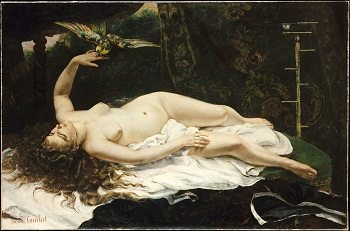
Woman with a Parrot is a painting produced by Gustave Courbet in 1866. Another painter Manet started working on his version of Woman with a Parrot in the same year. Paul Cezanne, another artist carried a small photograph of this painting in his wallet.
La Nymphe surprise by Édouard Manet
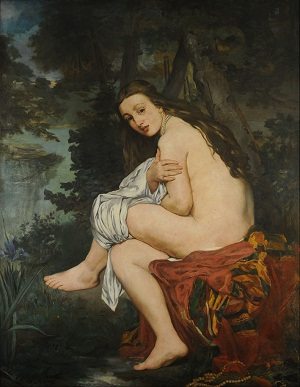
La Nymphe Surprise is a realism artwork produced by Édouard Manet in 1861. This painting is also known by the name “Nymph Surprised”. This painting can be viewed at the National Museum of Fine Arts in Buenos Aires and is considered as one of the highest collections.
The Spanish Singer by Édouard Manet
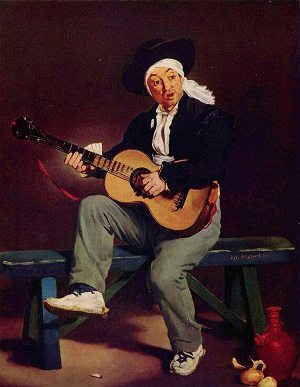
The Spanish Singer is a painting produced by Édouard Manet in 1860. This painting was completed in Manet’s studios and the props used in this painting were used in at least one other painting. This painting can be viewed at the Metropolitan Museum of Art of New York.
Lise with a Parasol by Pierre Auguste Renoir
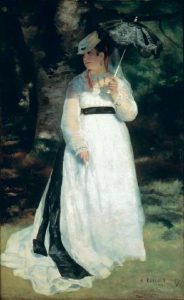
Lise with a Parasol is an artwork painting produced by Pierre Auguste Renoir in 1867. The model posing in a forest was Lise Trehot in this full-length painting. This painting was one of Renoir’s first critically successful works.
Portrait of an Unknown Woman by Ivan Kramskoi
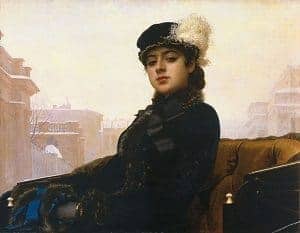
Portrait of an Unknown Woman is a famous painting produced by Ivan Kramskoi in 1883. This painting is also widely known by the name “The Unknown Woman“, or “An Unknown Lady”. This painting by the Russian artist is one of Russia’s best-known artworks.
The Wheat Sifters by Gustave Courbet
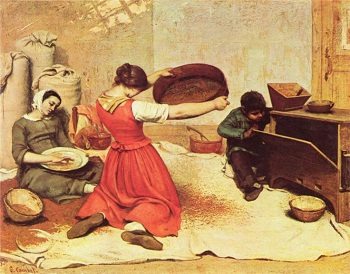
The Wheat Sifters is a painting produced by Gustave Courbet in 1854. This painting was exhibited at the Paris Salon in 1855 and then at the ninth exhibition of the Society of Friends of the Art of Nantes in 1861. It is assumed that the two women are Courbet’s sisters.
Skull of a Skeleton with Burning Cigarette by Vincent van Gogh
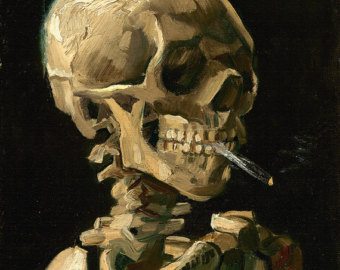
Skull of a Skeleton with Burning Cigarette is a famous artwork painting produced by Vincent van Gogh between 1885 and 1886. This painting can be viewed at the Van Gogh Museum in Amsterdam. This painting depicts a skeleton with a cigarette.
Reply of the Zaporozhian Cossacks to Sultan Mehmed IV of the Ottoman Empire by Ilya Repin

Reply of the Zaporozhian Cossacks to Sultan Mehmed IV of the Ottoman Empire is a realism artwork painting produced by Ilya Repin between 1880 and 1891. This painting is also known as “Cossacks of Saporog Are Drafting a Manifesto”.
The Balcony by Édouard Manet
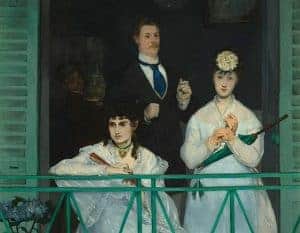
The Balcony is a painting produced by Édouard Manet in 1868 and 69. This painting depicts four figures on a balcony, one sitting and all others standing. This painting was first exhibited at the Paris Salon in 1869. This painting can be viewed at the Musée d’Orsay in Paris.
The Bellelli Family by Edgar Degas
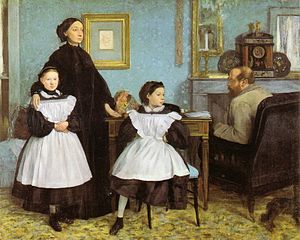
The Bellelli Family is a painting produced by Edgar Degas between 1858 and 1867. This painting is also widely known as the “Family Portrait”. This painting can be viewed at the Musée d’Orsay in Paris. In this painting, Degas’s aunt, her husband, and her two young daughters are depicted.
Whistler’s Mother by James McNeill Whistler
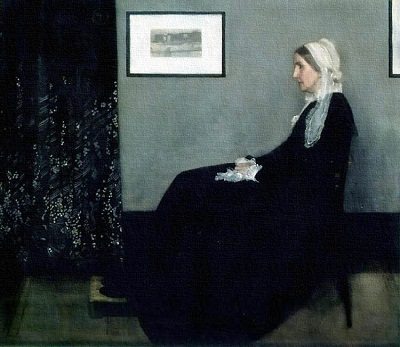
Whistler’s Mother is a painting produced by James McNeill Whistler in 1871. The American artist’s mother, Anna McNeill Whistler is the subject of this painting. This painting can be viewed at Musée d’Orsay in Paris as it was bought by the French state in 1891.
The Absinthe Drinker by Édouard Manet
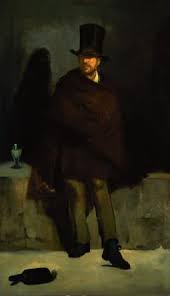
The Absinthe Drinker is a painting by Édouard Manet in 1859. The Absinthe Drinker is the first major and admired original work of Manet. It is a full-length portrait depicting an alcoholic rag-and-bone man named Collardet who frequented the area around the Louvre in Paris.
Conclusion
We live in a modern world with so many urgent issues including the neglect of true art.
Realism art proves to be what we all need to go back to reflect on these issues given its power to document contemporary culture while transmitting the basic details and consequences of the actions and decisions we make. Realism art strengthens and hones the skills of a true artist and it is what the world needs today.


